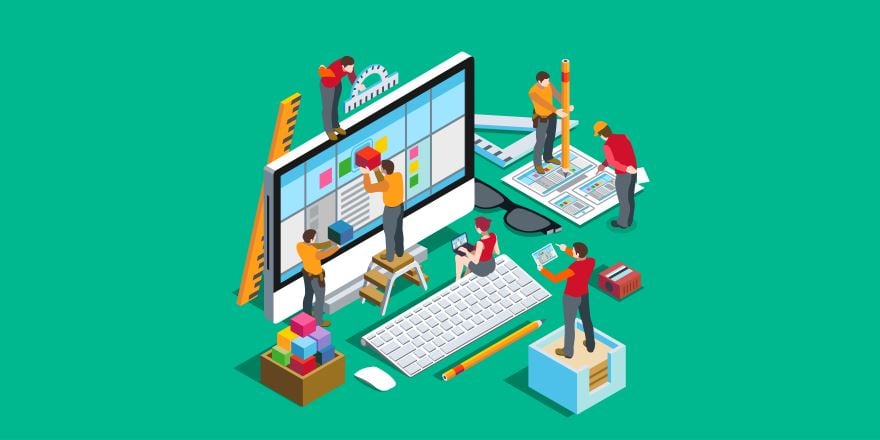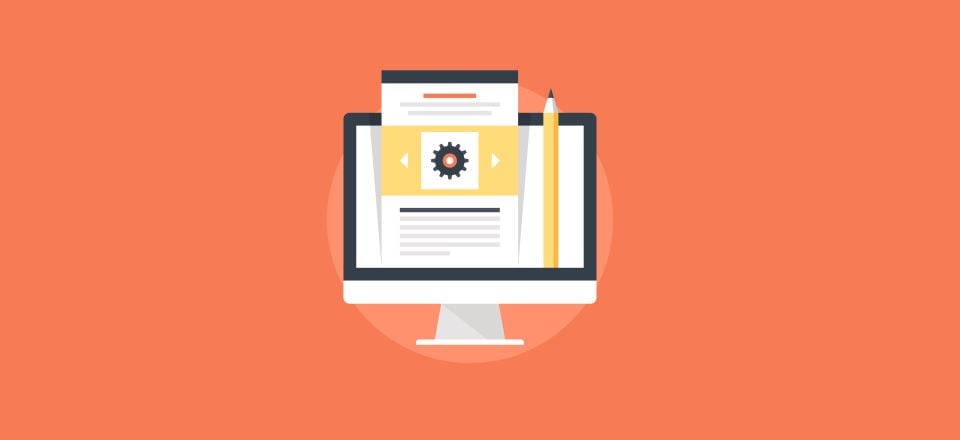Starting a website takes a lot of planning. Far too often, the planning stops there. Keeping a blog going and making it successful also takes planning. A blog is just like any business or project. To make a blog successful requires careful blog management.
In this article we’ll take a look at blog management and see the tasks involved. These tasks are not that difficult but they do take time and focus. If you put in the effort and manage your blog well it will go far into meeting your goals for your blog. Along the way I’ve added links to articles where you can read more about each topic.
Content

Image via Julia Tim / shutterstock.com
A blog is only as good as the content it provides. Content should be high quality and meet the reader’s needs. This isn’t done by chance. Content must be strategically planned.
Some of the tasks involved include:
- Ongoing ideas
- Categories
- Editing
- Sourcing for images
- Schedule
- Mediate comments
- Monitor success
Content Strategy
Don’t just post what you like. Know what the market needs. Keep in touch with the community to know their struggles and needs, understand trends, follow news, and other opportunities. Listen to readers in the comments and on social media. This will help in creating ongoing ideas for posts.
Use analytics to know your audience, their knowledge level, their goals, and their needs. Are they beginners that need information to get started? Are they hobbyists that need information to get them to the next level? Are they professionals who need information they can use to grow their own business? It’s a good idea to know your 3 primary target audiences.
Keeping your target market in mind, create a road map to provide readers with information they need. This will help grow your readership. This information sets the level and tone, and ensures the content the blog provides is what the readers expect.
Perform keyword research to help you know the content that would meet the needs of your audience and set your blog apart from the crowd.
Test various content types (long form articles, interviews, reviews, etc.) to see what works best for your readers. Don’t be afraid to ask them.
Know your competition. What do they produce that’s missing from your website that your readers need? Provide this content with greater detail or in a better format.
Use deep analytics tools to learn what your visitors are looking for and information such as their country, screen size, etc. Keeping an eye on the traffic will let you know when it’s time to upgrade your server.
Quality and Quantity
Create high-quality content. Always edit each post for the highest level of readability and accuracy. This includes SEO best practices to help improve blog rankings in search engine results.
Improving quality includes performing keyword research for every post, formatting images, text, bullets, links, meta, tags, tailoring calls to action to the audience, and tracking what works.
Maintain an editorial calendar with a good mix of content. This means keeping a consistent post schedule. According to HubSpot, blogs that post more than 16 times per month receive 3.5 times the traffic as those that publish 0-4 times per month.
Even if you can’t post 16 times per month you should keep a consistent posting schedule so your readers will know when to expect your articles. The frequency will depend on your audience and your site’s goals. How many websites have you seen that proudly display their latest event and it was two years out of date?
Writers and Writing
Large blogs often utilize multiple writers who are able to specialize in specific fields. Keep an eye out for the best freelance writers to contribute to your blog. Look for a diverse knowledge rather than everyone specializing in the same thing. Maintaining a list of reliable writers can keep your content high quality and on schedule.
Provide writing guidelines. This includes quality of writing expected, acceptable sources for media, media sizes and types, word counts, formatting, how to use links, how to submit articles, submitting ideas, deadlines, etc. The guidelines should be updated as changes are needed. Writing guidelines are useful even if you are the only writer because they help keep your posts consistent.
Utilize project management tools to keep content on schedule. Popular tools include:
If you want to stay close to home, you can add a project management plugin like Project Panorama to your WordPress blog.
Ads
Manage advertising programs within the articles and sidebars. This includes finding the best and most relevant affiliate programs, choosing ad designs and styles that fit within your branding, and keeping them updated. A good place to start is to find an affiliate plugin that works well with your program and needs.
Products
Managing products can be a full-time job on its own. Whether the products are digital or physical, the blog manager must handle product sourcing, prices, descriptions, customer questions, support, updates, etc. This also includes the eCommerce platform itself with viewing reports and keeping shipping and payment gateways up to date.
Comments

Image via Julia Tim / shutterstock.com
Comments are a great way to build a community and it gives readers a chance to voice their opinion. Depending on the size of the blog, dealing with comments can take a lot of time as the blog manager must determine which comments to allow and which to block. Maintain a commenting policy. This will explain to readers what is allowed and what isn’t.
Unfortunately not all comments are from real readers and not all comments should be published. Many comments are actually spam in disguise. The blog manager must not allow spam comments as they undermine the quality of the blog. I recommend using a spam-blocking plugin to help filter comments.
I don’t recommend posting offensive and insulting comments as they don’t provide value and can do more harm than good. I do recommend posting comments that identify problems and even disagree with points in your content. These can bring healthy conversation and debate, which adds to the quality of the discussion.

Image via Julia Tim / shutterstock.com
Blog management isn’t just about creating content – it’s also about promoting that content. Years ago we could publish articles and walk away, but today we have to share our content to get as many eyes on it as possible.
The blog manager needs to share insights and content on social media, video-sharing platforms, podcasts, and newsletters. This all takes a dedicated content distribution plan that repurposes and shares content everywhere your brand is and wants to be. Many people use tools such as Hootsuite and Buffer to help manage posting content across social networks and tailoring that content to each platform.
One of the single best ways of doing this is sharing your content inside of email newsletters. There’s the “easy way” of copying your post content into your email newsletters but the better way is to repurpose your post content and make it unique to your newsletter audiences. This gives you even more power in your email opt-in forms when you can say that by subscribing to emails they will get unique content that isn’t found anywhere else—even on the blog. But, this means moving away from allowing people to subscribe to your blog and toward using opt-in form plugins to get people to subscribe and be added to your email marketing platform.
Maintenance

Image via The Cute Design Studio / shutterstock.com
A blog must be maintained. This includes creating backups, hardening security, etc., as well as updating the WordPress core, themes, and plugins. These updates are crucial. They not only provide feature enhancements but also security patches and bug fixes.
Older versions of WordPress pose a danger of getting hacked. WordPress does update to the latest minor version automatically, but major updates have to be implemented manually. This can require testing and possibly fixing compatibility issues.
Themes and plugins also provide security patches, bug fixes, and add new features, but they have another concern to deal with – compatibility. Even if your themes or plugins have no security or bug issues it’s possible that some features will not work which can make your site look incomplete.
Try updates on test servers before implementing them on your live website. Be sure to test on multiple platforms and browsers.
Improvement

Image via aurielaki / shutterstock.com
Even if your website is running smoothly it can always run better. This includes the design, features, and even content. This also means keeping your site SEO optimized.
The site needs to be tested against its objectives and goals. For example, does your call to action perform according to your expectations? Are you getting the traffic or conversions you want?
Qualitative and quantitative data can help improve the blog. The blog manager should run a/b testing to see what’s effective and what isn’t. Maybe colors need to change, buttons need to move to a new location, calls to action need to be clearer, content quality or focus needs adjusting, etc.
Pay attention to performance. Test page-loading speeds to see what the loading issues are and make the changes it recommends. Pages that load too slowly can send your visitors to your competition. The faster a site can load the better.
Choosing Themes and Plugins
Often features need to be added or the design direction needs to be modified. This sometimes requires the blog manager to choose new themes and plugins. Making good choices is crucial as themes and plugins affect not only the design of the site but also the security and speed. Every plugin that adds a new feature might have a negative impact on something else such as usability or loading time.
The blog manager will need to compare themes and plugins on a routine basis to ensure they still provide the features needed and to see if there are better options.
Final Thoughts
There are a lot of tasks involved with blog maintenance. Running a blog is much more than posting articles. It’s determining which topics to focus on, the length of content, types of content, hiring writers, promoting content, handling comments, keeping the site safe and updated, and making improvements. It’s setting blog goals, ensuring the blog is meeting its goals and modifying goals as needed.
Managing a blog isn’t difficult, but to do it right takes time and planning. You can get out of it what you put into it. The principles are the same regardless of the size of the blog. If you manage your blog well you can have a website that meets your goals and your readers’ needs.
We want to hear from you. What would you add to this list? Let us know in the comments below.
Featured Image via vasabi / shutterstock.com









“Managing a blog isn’t difficult, but to do it right it does take time and planning.” This is the key point. And the reason why so many blogs go idle after a few weeks or months.
It’s hard work maintaining a successful blog. This is a great overview and completely agree with all the points
Those really are crucial if you are hoping to manage a successful blog. I think as a blogger, your relationship within the blogging community is important as well if you want to success with your blog. It helps in amplifying your content and enhance your reach.
Yup, it all makes perfect sense. Thanks for the reminder. 😉
Once you get seriously blogging it can be addictive. The could add a paragraph or two on how to cope with blogger’s guilt, that nagging feeling that you should have posted more!
Excellent insight into the elements of blog management. It takes quite a bit more work than just publishing a blog post or two every week, and you really drove that home. This is a great article for anyone looking to seriously get into blogging.